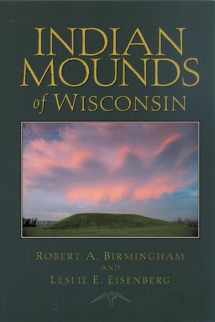
Indian Mounds of Wisconsin
Book details
Summary
Description
More mounds were built by ancient Native American societies in Wisconsin than in any other region of North America--between 15,000 and 20,000 mounds, at least 4,000 of which remain today. Most impressive are the effigy mounds, huge earthworks sculpted into the shapes of birds, animals, and other forms, not found anywhere else in the world in such concentrations. This book, written for general readers but incorporating the most recent research, offers a comprehensive overview of these intriguing earthworks and answers the questions, Who built the mounds? When and why were they built?
The archaeological record indicates that most ancient societies in the upper Midwest built mounds of various kinds sometime between about 800 B.C. and A.D. 1200; the effigy mounds were probably built between A.D. 800 and A.D. 1200. Using evidence drawn from archaeology, ethnography, ethnohistory, the traditions and beliefs of present-day Native Americans in the Midwest, and recent research and theories of other archaeologists, Birmingham and Eisenberg present an important new interpretation of the effigy mound groups as "cosmological maps" that model ancient belief systems and social relations. It is likely that the distant ancestors of several present-day Native American groups were among the mound-building societies, in part because these groups’ current clan structures and beliefs are similar to the symbolism represented in the effigy mounds.
Indian Mounds of Wisconsin includes a travel guide to sites that can be visited by the public, including many in state, county, and local parks.


We would LOVE it if you could help us and other readers by reviewing the book
Book review



